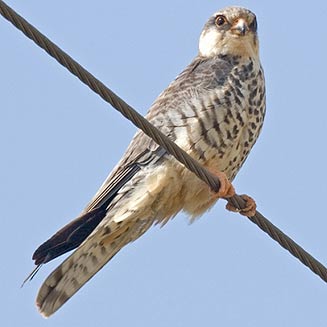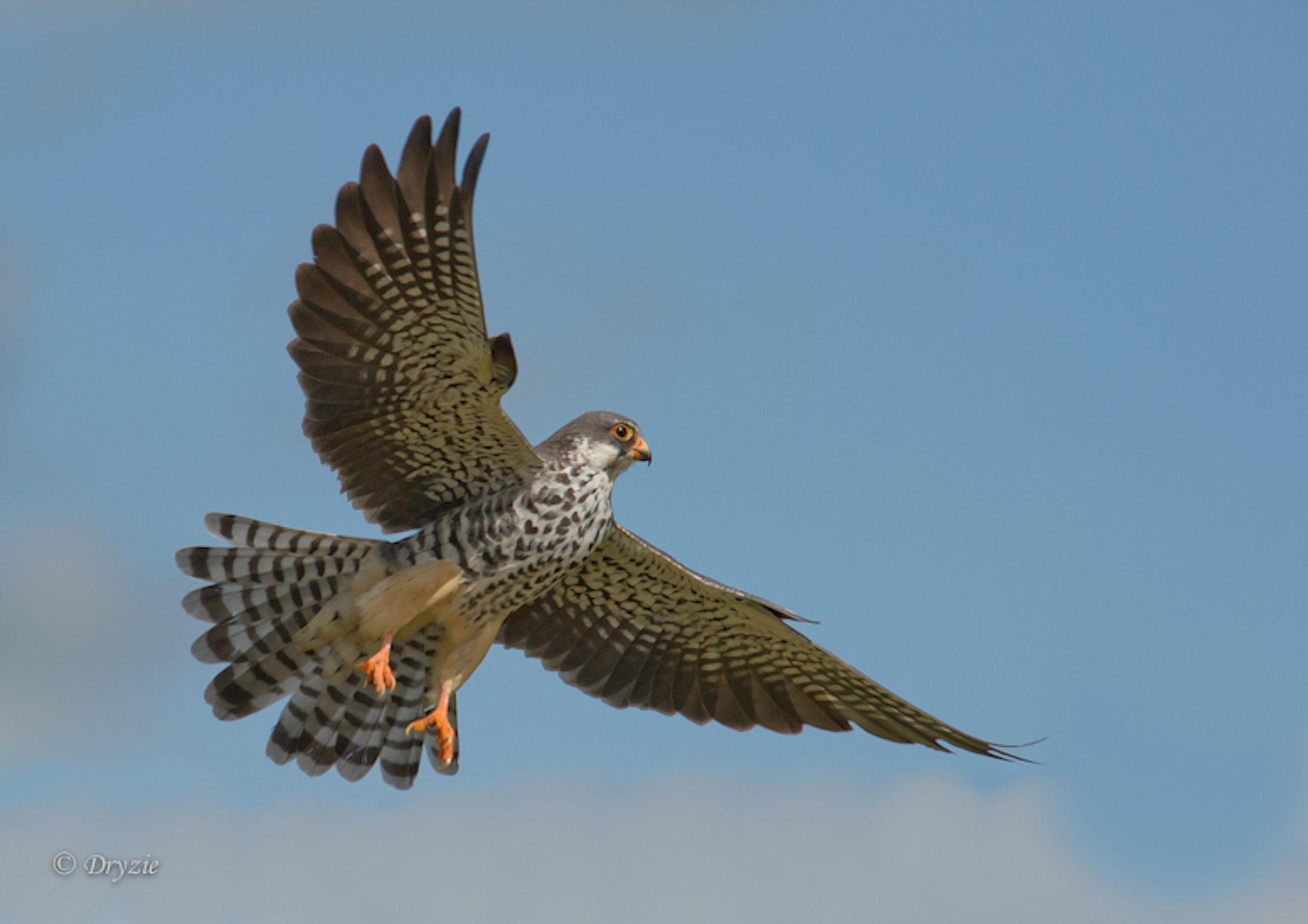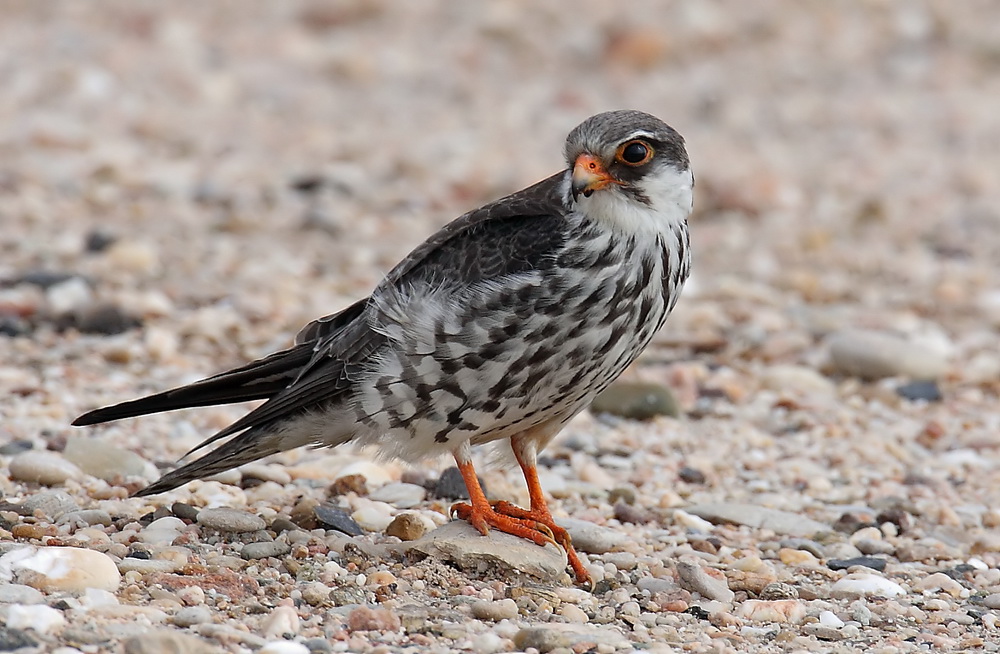
Falco amurensis
SUBFAMILY
Falconinae
TAXONOMY
Falco vespertinus var. amurensis Radde, 1863, Zeya River, Amurland.
Sister species to very similar red-footed falcon F. vespertinus.
Monotypic.
OTHER COMMON NAMES
English: Manchurian, Amur, or eastern red-footed falcon;
French: Faucon de l’Amour; German: Amurfalke; Spanish:
Cernнcalo del Amur.
PHYSICAL CHARACTERISTICS
11.0–11.8 in (28–30 cm); male 3.4–5.5 oz (95–155 g), female
3.9–6.7 oz (110–190 g). A colorful little falcon with unusual
red legs, cere, and eye ring. Male mostly slate gray with contrasting
chestnut lower belly, undertail coverts, and thighs. Female
very different: upperparts gray; underparts whitish
streaked and chevroned with black. Juvenile similar to adult female
but with rufous edging to upperparts.
DISTRIBUTION
Breeds in southeast Siberia and from northeast Mongolia to
Amurland, south into northern and eastern China and North
Korea, occasionally northeast India. Winters in southern
Africa, mainly from Malawi to Transvaal.
HABITAT
Breeding grounds: open woodland and woodland (coniferous
and deciduous) margins and marshes, likes mature trees and
avoids treeless areas. Wintering grounds: savanna and grassland
with clumps of trees.
BEHAVIOR
Whole population migrates from eastern Asia to southern
Africa, often in large groups, sometimes with other small falcons.
Leaves Asia in September, begins arriving in Africa in
late November. In Africa, roosts at traditional sites in groups
of trees, used by hundreds to thousands of birds. Returns to
Asia, departing mainly March, arriving mainly April.
FEEDING ECOLOGY AND DIET
Feeds on insects such as locusts, grasshoppers, and beetles, and
on small birds and occasionally amphibians. Hunts, often
around dusk, from perch to capture prey in air, less often on
ground, sometimes hovers. Outside breeding, gathers in flocks
to feed on termite and ant swarms often associated with rain
storms.
REPRODUCTIVE BIOLOGY
Nests annually as solitary pair or in small colonies, in old
corvid nests or tree holes. Lays in May–June; usually three or
four eggs; incubation about 28–30 days; fledges at about one
month.
CONSERVATION STATUS
Not threatened. Thought to be common, at least locally.
SIGNIFICANCE TO HUMANS
None known.
Photo Gallery of - Amur falcon




 Animalia Life
Animalia Life